Bay Leaves (Tejpatta)-An amazing spices
What is Bay leaves?
Bay leaves are an aromatic leaves of several plants including the Bay laurel tree (Laurus nobilis), which is the most common source of culinary bay leaves . Laurel tree is an evergreen tree belong to a lauraceae family & native to the Mediterranean region has a sweet bay leaf or bay laurel. leaves are used as a herbs for imparting aroma in cooking due to its aromatic characteristic.
Common name of bay leaves in Indian & around the world: –
- Bay laurel or bayleaves or sweet bay leaves in English
- tezpatta (तेज़पत्ता) in Hindi, Bengali & Urdu
- Tamaalpatra in sanskrit
- Tezpat in Maithili, Assamese & Nepali
- tamalpatra (तमालपत्र) in Marathi
- Tamaala in Kannada
- Tamala Patra or Develee in gujrati
- Dalchini pan or Tajpatra in Kashmiri
- Karuvapatta Patram in Malayalam
- Tejapatra in oriya
- Tajpater in Punjabi
- Lavangapatri in Tamil
- Akupatri in Telgu
- In Arabic it is known as waraq ghaar
Characteristic of Bay leaves:-
- Appearance: The bay leaf has dark green & glossy leaves that are elliptical and slightly leathery. The upper surface of the leaf is glabrous and shiny, olive green, and lower surface is dull olive to brown with a prominent rib and veins.
- Size:-The size of the leaves is ranging from 2.5 to 7.5 cms in length and 1.6 to 2.5 cms in breadth.
- Shape:-The shape is elliptical and tapering to a point at the base and tip of the leaves.
- Aroma:-Fresh bay leaves have a bitter and pungent taste, due to which it is used dried in form . The aroma of the crushed leaves is delicate & fragrant and taste is aromatic and bitter.
- Bay leaf can be combined with a variety of other herbs including cloves, thyme, tomato, mustard, parsley, paprika, sage, and pepper for use in soups, stews, as well as with fish, vegetables, and meat.
Types of bay leaves used as a spices in the culinary world:-

Bay leaves are aromatic leaves belong to several species of laurel family with their distinctive flavour & fragrance. There are 6 types of bay leaves commonly used world wide are:-
- Bay Laurel or Mediterranean or Turkish bay leaves
- Indian bay leaves
- Indonesian bay leaves
- California bay leaves
- Caribbean’s bay leaves or west Indian bay leaves
- Mexican bay leaves
Bay laurel or Mediterranean or Turkish bay leaf: –
The terms Bay laurel, Mediterranean bay leaf, and Turkish bay leaf all refer to the same plant, Laurus nobilis. It is also known as simply laurel.
- The fresh leaves have a milder flavor. The main characteristic of bay laurel leaf is its elongated in size. The leaves are usually 3-8cm long & 1-3 cm wide. Fresh leaves are highly aromatic and bitter.
- To access the quality of bay laurel, a thumb rule is that –the greener the color of dry bay leaves, the better the quality. This is because the leaves are dried by slow processing of drying methods without any exposure to direct sun light to retain the green color of bay leaves.
- It has a delicate aroma, slightly bitter but earthy taste. It should be used in low quantity to avoid bitterness in the dishes and must be removed before serving.
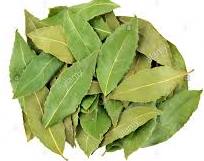
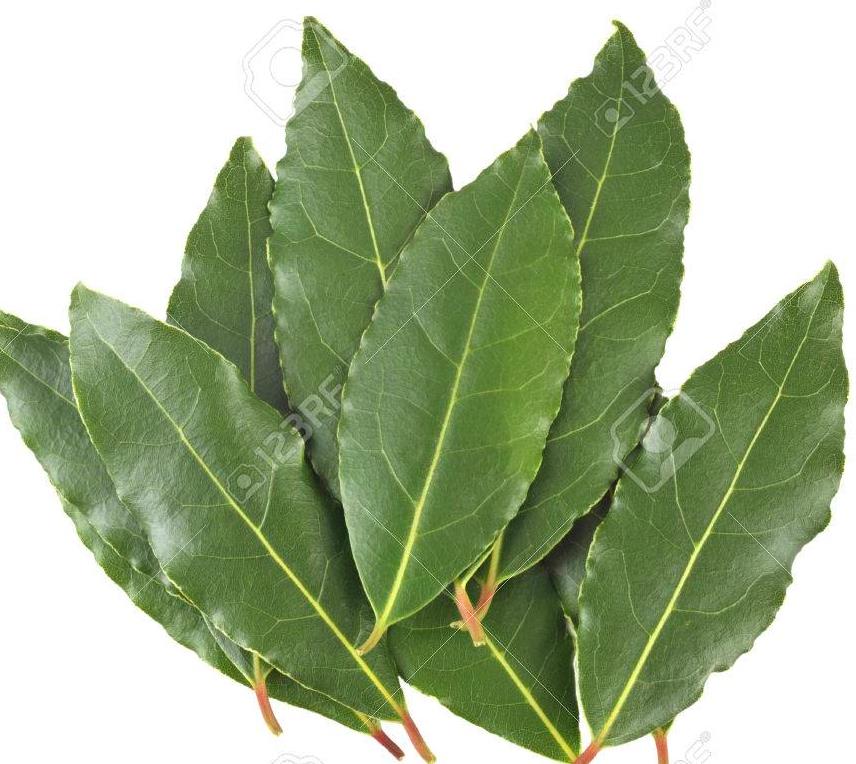
Pic courtsey-alamy & 123RF
Culinary Use of Bay laurel or Mediterranean bay leaf:-
- These leaves are commonly used in Mediterranean cuisine, including Italian, Greek, and French dishes. It is added mainly to Mediterranean stock, soup, sauces, casseroles, stew, rice and vegetable , potato dishes as well as in pudding, pickles and marinades for their delicate aroma and earthy flavour.
- It is one of the main herbs in bouquet garni that is classical combination of bay leaves, thyme & parsley.
Indian bay leaf or Tej Patta
Indian bay leaves, also known as Tejpatta or Tej Pat are different from the Mediterranean bay leaves in terms of size, appearance & aroma. Indian bay leaf is commonly known as Tej patta in Hindi and tamalapattra [तमालपत्त्र] in Sanskrit language which means a dark leaf.
Characteristic:-
- Appearance: Indian bay leaves are larger, longer and wider than Mediterranean bay leaves. They are usually 2 to 5 inches long and have three prominent veins running the length of the leaf, distinguishing them from Laurus nobilis, which has only one central vein.
- Color: When fresh, the leaves are green, but they are typically dried for culinary use, turning a dull green or brownish color.
- Aroma and Flavor: Indian bay leaves have a distinct aroma and flavor, which is more akin to cinnamon, clove, and cassia bark. This makes them different from the subtle herbal flavor of Mediterranean bay leaves. The flavor profile of Indian bay leaves is warm and spicy, often described as a mix of cinnamon, cloves, and nutmeg.
- Indian bay leaf is one of the most commonly spices in the entire North Indian regional cuisine specially in the preparation of traditional Garam masala powder, Pulao & Biryani, almost all kind of meat, fish & poultry dishes, Vegetable dishes, sweet rice dishes like Rice kheer, Tea etc. It is usually added whole at the beginning of the cooking at the time of tempering it in hot oil to impart its typical flavor in the food items. It is also used in the preparation of Indian Tea or chai.


Pic courtesy- Health benefit times.
Difference between Mediterranean bay leaves & Indian bay leaves
| Bay laurel (Mediterranean bay leaves) | Indian bay leave (Tejpatta) |
| Bay laurel leaf is generally smaller or shorter and bit elongated in size. The leaves are usually 3-8cm long & 1-3 cm wide.it has a single spine or vein running primary down the middle of the bay leaf | Indian bay leaves is larger than the Mediterranean bay leaves in size and the typical characteristic of Indian bay leaves i.e Tejpatta is that it has 03 spine down the middle of the bay leaves instead of one spine in case of Mediterranean bay leaves. |
| Bay laurel is the leaves of bay laurel tree and its leaves are delicate and aromatic in flavor and its taste is spicy, bitter but earthy. Its taste is robust so it goes well with the preparation of sauce, soup, stock, stew, casseroles, marinades etc in European & Mediterranean cuisine. | Indian bay leaves is a leaves of cassia plant and its flavor is similar to the flavor of cinnamon & clove together. The aroma which comes in the Indian bay leaf is just due to the presence of eugenol, linaloo & Beta-caryophyllene essential oil in it. |
| European bay leaf basically belong to the species of Laurus nobilis and its aroma imparts a pine-lemony flavour. | Whereas Indian bay leaves are basically belong to the spices of cinnamon tamala & belong to laurel family which is relative to the cinnamon. its aroma is typically similar to the strong cassia-cinnamon aroma. |
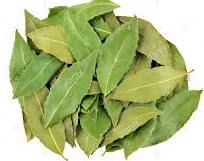 |  |
Indonesian or Balinese bay leaf:-
Indonesian bay leaf or Balinese bay leaf locally known as Daun Salam comes from the plant Syzygium polyanthum. This leaf is widely used in Indonesian, Malaysian, and other Southeast Asian cuisines and it differs significantly from both Mediterranean and Indian bay leaves in terms of aroma & flavor.
Appearance: Indonesian bay leaves are smaller, thinner, and lighter in color compared to Mediterranean bay leaves. They are usually oval-shaped and are green when fresh, turning brown or dark green when dried.
Flavor and Aroma: The flavor of Indonesian bay leaves is mild and slightly peppery with hints of nutmeg and clove. They have a unique aroma that is not as strong as Indian bay leaves but is more fragrant than Mediterranean bay leaves.
Culinary Uses: Indonesian bay leaves are a staple in many traditional dishes. They are commonly used in soups, stews, curries, and rice dishes, such as Nasi Goreng (fried rice) and Rendang (a rich, spiced meat dish).
- In Bali, these leaves are often used in ceremonial dishes and everyday cooking. They are added to spice pastes, braised dishes, and even in certain sweet preparations.
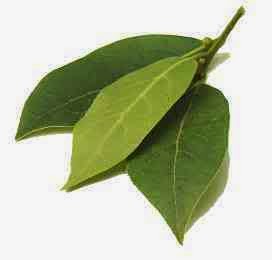
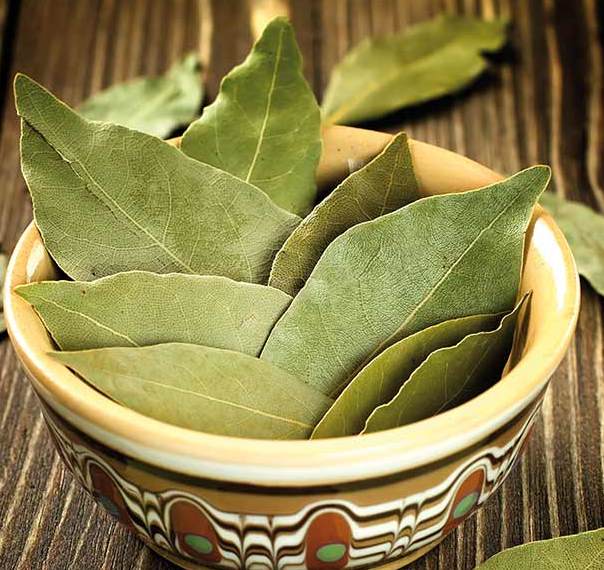
Pic courtsey-stylecraze
California bay leaf
The California bay leaf also known as Oregon myrtle, pepperwood, or California laurel. Its tree is native to the western United States, particularly California and Oregon. Its leaves are elongated and oblong in shape and its color ranges from green to yellow and glossy with smooth edged.
- Appearance: The leaves are long, narrow, and dark green in color. It has similar in appearance to Mediterranean bay leaves but generally larger and more elongated.
- Aroma and Flavor: California bay leaves are much stronger in flavor than Mediterranean bay leaves. They have a very pungent, sharp, and slightly medicinal flavor.
Difference between California bay leaf & Mediterranean bay leaves: –
| California bay leaves | Mediterranean bay leaves |
| It leaves are bit longer, thinner leaves and a more potent and slightly minty but strong flavour. Its leaves are deeper green in color as compare to the bay laurel or Mediterranean bay leaves. The dried California bay leaves color becomes a matte olive green color and its flavor intensifies. | It leaves are bit shorter, thicker leaves and a more subtle flavor than California bay leaves. |
 | 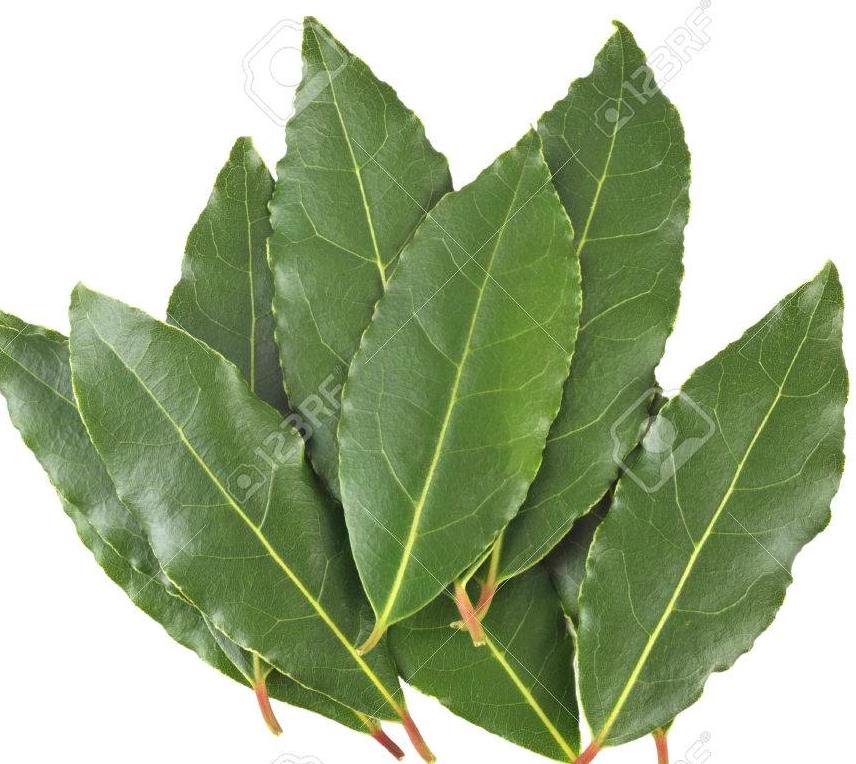 |
Caribbean’s bay leaves:-
Caribbean bay leaves often referred as West Indian bay leaves. It comes from the Pimenta racemosa tree. It is commonly known as sweet bay leaves or bay rum tree in Caribbean countries. The size of the leaves are generally in the range between 2-5 cm long and 2cm wide. Leaves are thick and shiny with color ranging from bright green to bottle green in color, the darker the caribbean leaves as it mature it will impart robust flavour.
- Aroma: Caribbean bay leaves have a slightly stronger and more complex aroma compared to Mediterranean bay leaves. They often have hints of clove, cinnamon, and allspice.
- Culinary Use: These leaves are often used to flavor stews, soups, rice dishes, and marinades. They are usually added to dishes during cooking and removed before serving.
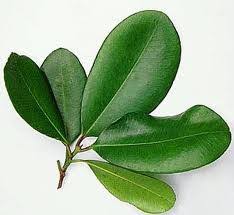

Pic source:-mybayleaftea.com & organic facts.
Mexican bay leaves
Mexican bay leaves mainly grown in Mexico. Mexican bay leaves have a similar but slightly milder flavor compared to Mediterranean bay leaves. They possess a delicate fragrance with herbal, slightly floral notes.
- Culinary Use: These leaves are used in Mexican cuisine to flavor soups, stews, and sauces, particularly in dishes like pozole, mole, and various broths.
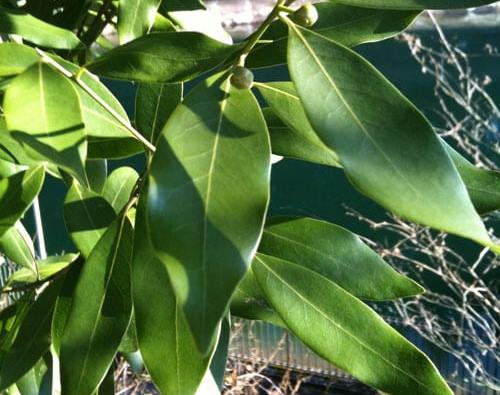

Pic courtesy-biologystack & all receipe.
Culinary Use of bay leaves
Bay leaves are a staple in many cuisines worldwide. Due to its distinctive flavor & aroma it has extensive use in food items all around the world. Here are the some of the most common use of bay leaves in food items:-
- Used for Flavoring Soups and Stews: Bay leaves are commonly added to most of the stock, broth, soups & stews preparations as it infuse the liquid with a slightly bitter & herbal flavor to enhances the overall taste of the dish.
- Main ingredients in bouquet garni:-It is one of the main ingredient in bouquet garni which is a combination of bay leaves, thyme, parsley & peppercorn etc to flavour soup & sauces, stews & casseroles.
- In tempering:-Tej patta is tempered in oil or ghee to impart its aroma in dishes while cooking. It is usually discarded at the end of the cooking of the dish or before serving of the dishes as tejpaata is woody is nature and cannot be eaten.
- Used in Spices mixture:-Tej patta are used as a spices as a whole or crushed or grounded form in cooking. Crushed bay leaves impart more of the flavour than whole leaves, but it is bit difficult to remove from the end of the cooking. Therefore, it is better to use the crushed bay leaves in a muslin cloth and then used to flavour in the food while cooking. Whole tejpatta leves can be used to flavour any dishes and it is easier to remove from the cooked dishes.
- Tejpatta easily combined with a variety of other spices such as cloves, cinnamon, cardamom, pepper ,peepli, kabab chinni etc for use in preparation of various dry masala powder such as Garam Masala powder, Meat masala powder, sambhar powder, curry powder, vegetable masala etc.
- Used extensively in North Indian dishes:-Bay leaf is one of the most common used spices in North Indian cooking and as an integral ingredient in Mughlai & Kashmiri food preparation such as Meat, Fish & Poultry dishes, kabab and korma, vegetarian dishes etc.
- In Indian food, bay leaves are primarily used to impart the typical flaovour in gravies, Indian curries and Rice dishes such as Shahi Pulao, Biryanis, various Lentil or dal preparation & tempering such as Dal makahani, channa dal, panchmahal dal etc.
- Blending with other spices & herbs:- It can also be easily blended with many other herbs such as garlic, mustard, pepper, parsley, rosemary, thyme, and oregano.
- Used in preparation of various Tea:– In India Tejpatta is one of the main ingredients used in the preparation of Indian Tea or Chai to flavour it. It is also used in the preparation of Tsheringma herbal tea which is very popular in Bhutan
- Bay leaves are also used in one of the popular Caribbean dishes such as Jerk Chicken.
- Used in Processed food:- Bay leaf has universal industrial importance as dried leaves and essential oils give courtesy flavor to foods as in meat products, canned soups, baked goods, Confectionery products, Cola type drinks, to flavour tobacco etc
- Used in Pickling & Brining:- Bay leaves are used in pickling brines for vegetables and in preserving meats, where they add a hint of spice and preserve the freshness of the food. Bay leaves can be used to infuse oils and vinegars, creating flavorful bases for dressings, marinades, and drizzles.
Popular brand name of Tejpatta in India:-
In Indian market tejpatta is available in whole dried leaf in poly packed. The average cost of the tejpatta is in the range between Rs 1000/- kg to Rs 2000/-per kg depending upon the quality of tejpatta and its brand names.
- Wonderland foods
- Yuvikka food
- Dawn lee bayleaves
- Nature vit tejpatta
- Raunak tejpatta
- JK Greens tejpatta
- Godka tejpatta
- Salze & aroma tejpatta

Content Reference:-
The prime moto while preparing the above content is to educate the students who are pursuing carrier in Hospitality & food trade, Hoteliers, chefs, Hotel Management faculty members, Housewife’s etc. The above content has been compiled after referring various culinary books, Research Papers, Research articles, Food magazines, news papers, top culinary websites, Govt websites, personal interaction with renowned chefs from various hotel brands like The Ashok Group of hotel, ITC, Oberai, Leela, Park Hotels & various IHM Faculties, Nutritionists etc. & many more. The picture which i have used has been taken from the open source website .Some of the important website referred for the above content are:-
- https://www.allrecipes.com/article/what-is-a-bay-leaf/
- https://www.ncbi.nlm.nih.gov/pmc/articles/PMC7152419
- https://specialtyproduce.com/produce/Bay_Leaves_3554.php
- https://www.indianspices.com/spice-catalog/bay-leaf.html
- https://www.thespruceeats.com/what-is-a-bay-leaf-995576
- https://www.atlasobscura.com/articles/what-is-a-bay-leaf
- https://www.sciencedirect.com/science/article/pii/S1878450X23001087
- https://www.smh.com.au/goodfood/bay-leaves-everything-you-need-to-know-20211012-h1z4yg.html
- https://www.thespicehouse.com/blogs/news/spotlight-bay-leaves
- https://www.bbc.co.uk/food/bay_leaf
- https://timesofindia.indiatimes.com/life-style/food-news/8-lesser-known-benefits-of-adding-bay-leaf-to-the-daily-diet/articleshow/108500288.cms
- https://www.wfla.com/bloom-tampa-bay/bloom-food/bay-leaves-what-you-need-to-know-about-the-underrated-spice/
- https://www.foodandwine.com/seasonings/herbs/in-defense-of-bay-leafs.
- https://www.karakoramrestaurant.com/blog/the-spice-guide-what-is-the-purpose-of-bay-leaves
- Journals.iww.com
- Spice board of india
- Food.ndtv.com
- Secretindianreceipe.com
- The culinary cookbook
- Food production operation from p.s bali
- Indian spice trade.
- Mediterranean food book
- FDA & FSSAI
